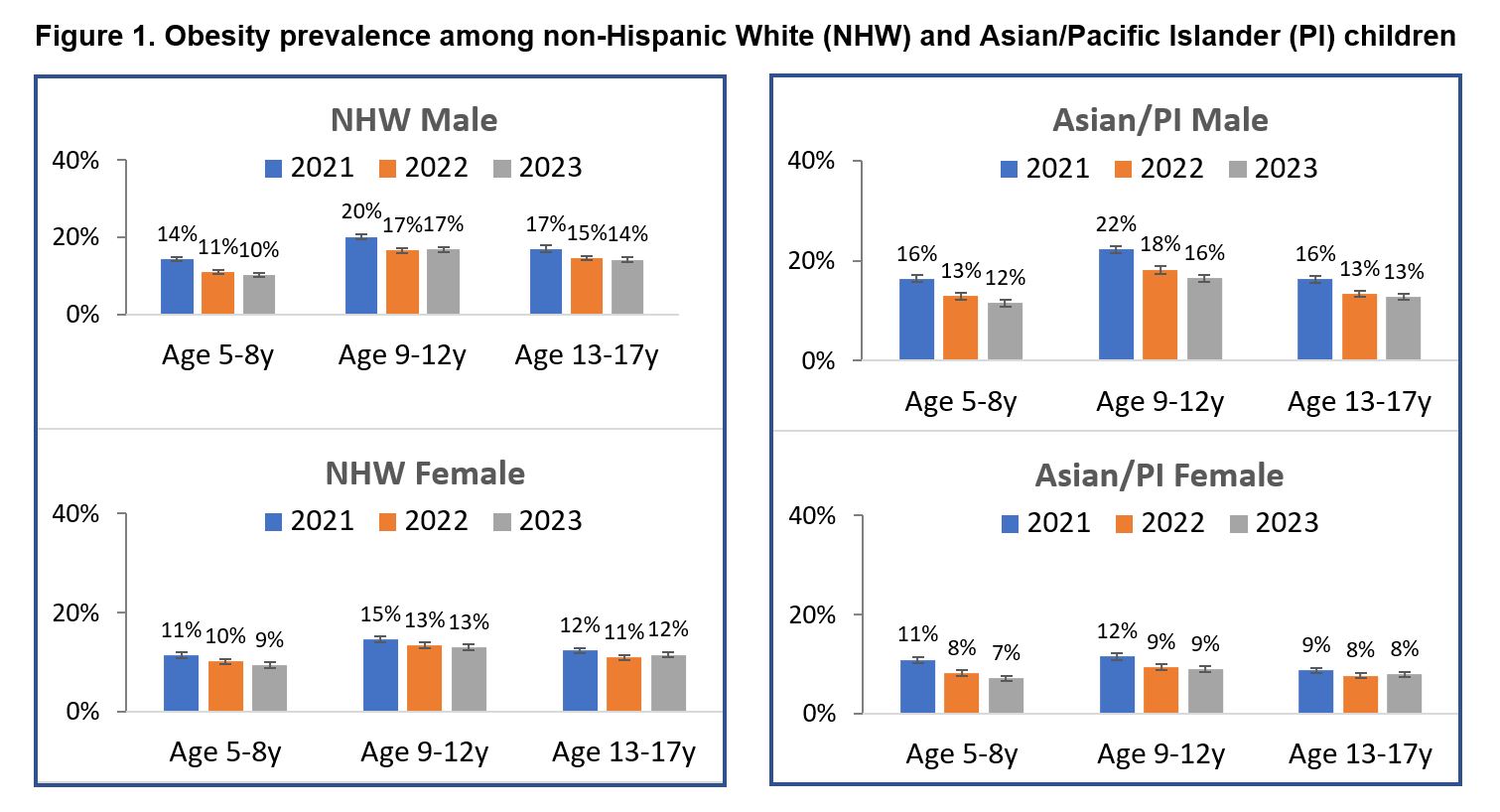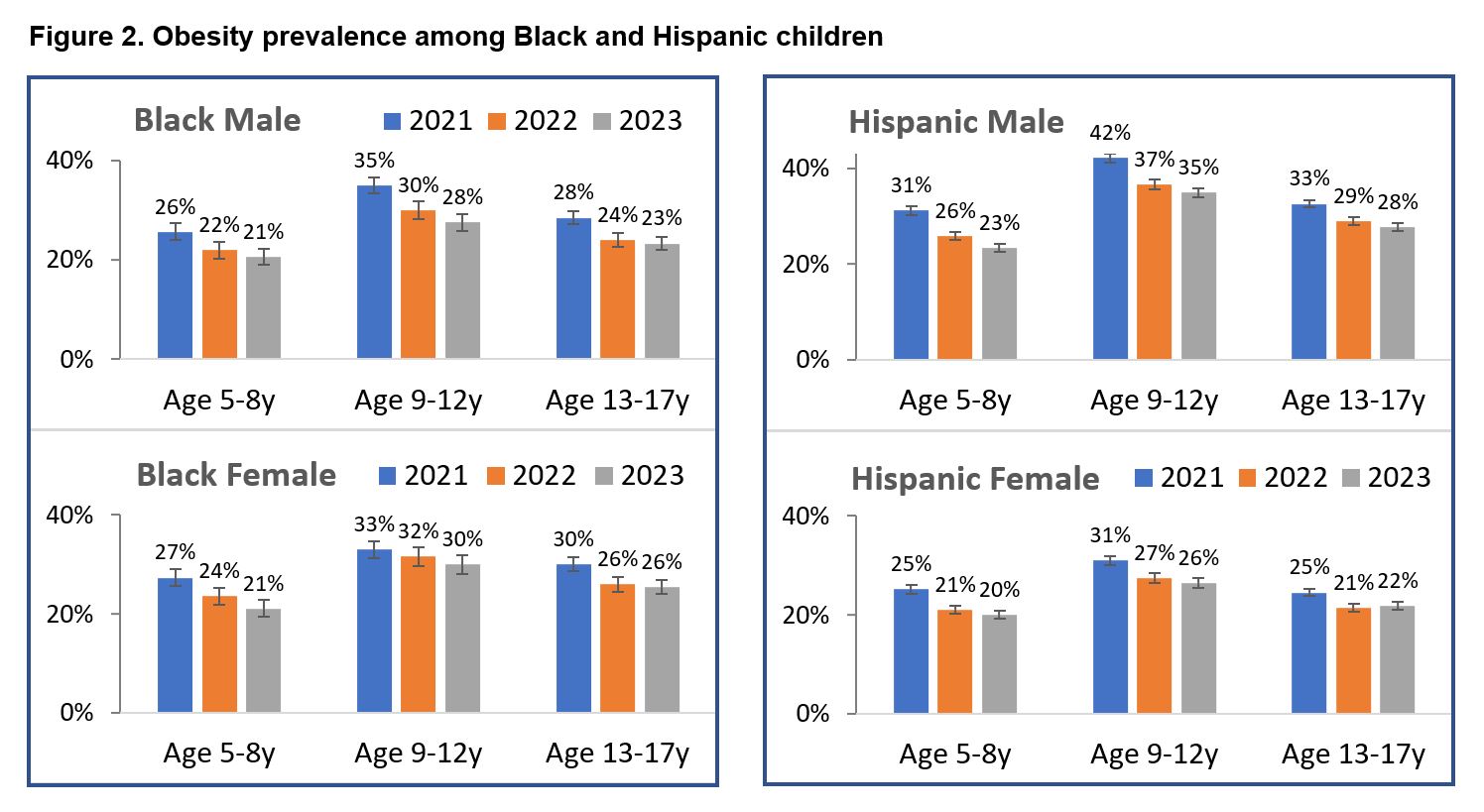Obesity 2
Session: Obesity 2
284 - Demographic trends in pediatric weight status in a US healthcare population from 2021 to 2023
Sunday, April 27, 2025
8:30am - 10:45am HST
Publication Number: 284.4493
Amanda J. Chang, Kaiser Permanente - Oakland Medical Center, Oakland, CA, United States; Jeanne A.. Darbinian, Kaiser Permanente, Pleasanton, CA, United States; Brendan Seto, Kaiser Permanente - Oakland Medical Center, Oakland, CA, United States; Erica P.. Gunderson, Kaiser Permanente Division of Research and Kaiser Permanente Bernard J Tyson School of Medicine, Pleasanton, CA, CA, United States; Louise Greenspan, Kaiser Permanente San Francisco, San Francsico, CA, United States; Joan C. Lo, Kaiser Permanente Northern California, Pleasanton, CA, United States

Amanda J. Chang, MD (she/her/hers)
Resident Physician
Kaiser Permanente - Oakland Medical Center
Oakland, California, United States
Presenting Author(s)
Background: There has been increasing concern about the burden of obesity among children and adolescents, especially after the COVID-19 pandemic. However, few studies have examined contemporary obesity prevalence in clinical pediatric settings.
Objective: Our study aimed to examine obesity trends by race and ethnicity in a community-based pediatric primary care during the three years following the start of the COVID-19 pandemic in 2020.
Design/Methods: We ascertained body mass index (BMI) among children aged 5-17y in a large Northern California health plan from well child visits occurring in 2021-2023, ascertaining the first visit per child per year among non-Hispanic White (NHW), Black, Hispanic, and Asian/Pacific Islander (PI) children according to sex (male/female) and age groups (5-8y, 9-12y, 13-17y). BMI was classified as underweight (BMI < 5th percentile), healthy (BMI 5th to < 85th percentile), overweight (BMI 85th to < 95th percentile), and obesity (BMI ≥95th percentile). The prevalence of obesity was examined for each age-sex demographic group across the calendar years.
Results: During the 3-year observation period, BMI data from 685,432 well child visits were examined among 481,889 children (36% NHW, 29% Hispanic, 27% Asian/PI, and 8% Black) of whom 51% were male. In each calendar year, obesity prevalence was significantly higher in males than females across most demographic groups, but not Black children. When sex-specific patterns were examined by age, obesity prevalence tended to be higher in the preteen years (age 9-12y) for most race and ethnicity groups. Overall, Hispanic males had the highest obesity prevalence: 31% (age 5-8y), 42% (age 9-12y), and 33% (age 13-17y) in 2021. Prevalence was also high among Hispanic females and Black children. Obesity trends in 2022-2023 tended to be lower than 2021 for most demographic groups, but cohort size also varied each year (255,826 in 2021, 207,657 in 2022, and 221,949 in 2023).
Conclusion(s): Obesity prevalence was high among children receiving routine pediatric care in the years following the COVID-19 pandemic onset, especially in 2021. Prevalence varied by sex, age group, and race/ethnicity. While the observed trends may be multifactorial and are limited by lack of data on sociodemographic factors, clinical conditions, and visit indication, future studies should examine which children are at highest risk for persistent obesity. Identifying the populations that are more vulnerable following public health emergencies can support targeted efforts for lifestyle counseling and intervention in clinical practice settings.
Figure 1. Obesity prevalence among NHW and Asian/PI children

Figure 2. Obesity prevalence among Black and Hispanic children


